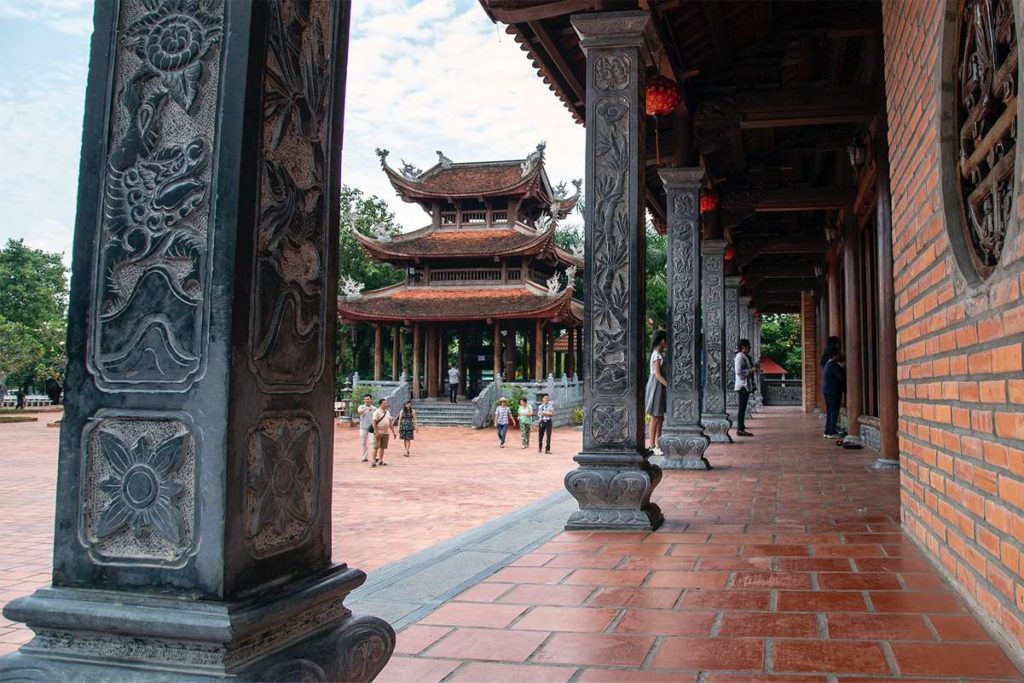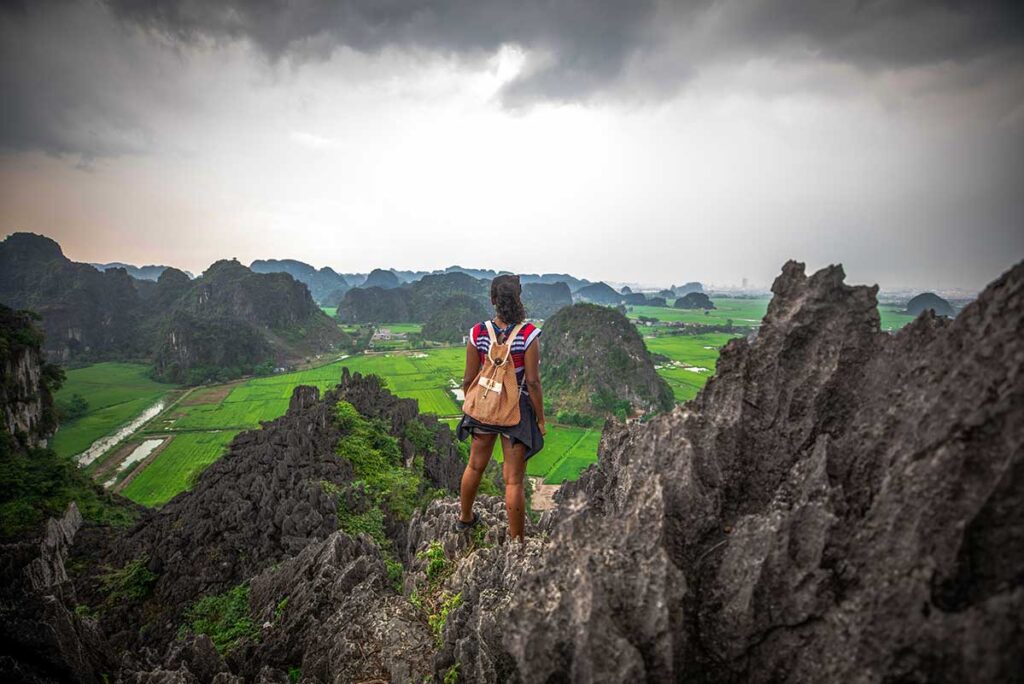What are monasteries in Vietnam?
Their purpose
Monasteries in Vietnam are active centers of Buddhist practice where monks live, study, and dedicate themselves to meditation and teaching. For travelers, they are not just sightseeing spots but living communities that continue to shape Vietnam’s spiritual landscape. Many monasteries also serve as cultural landmarks, offering visitors a chance to step into a quiet world of prayer halls, gardens, and mountain settings.
Monastery vs pagodas and temples
While the terms can overlap, it helps to know the difference. Pagodas and temples in Vietnam are primarily places of worship, often located in towns or cities, where local people come to pray, make offerings, and join festivals. Monasteries, on the other hand, focus more on monastic life and meditation. They are often found in natural surroundings such as mountains, forests, or lakes, making them destinations where visitors can experience both spirituality and scenery.
If you are especially interested in temples and pagodas, you can also explore our guide to the best temples and pagodas in Vietnam.
Types of monasteries in Vietnam
Trúc Lâm Zen Monasteries
The Trúc Lâm Zen school, revived in the late 20th century, is today the most visible form of monastic life in Vietnam. These monasteries were deliberately built in spectacular natural locations such as lakesides, pine forests, or mountain slopes. Famous examples include Trúc Lâm Đà Lạt, Trúc Lâm Yên Tử, and Trúc Lâm Tây Thiên, all of which combine spiritual practice with breathtaking scenery.
Historic monasteries
Some monasteries have centuries of history and remain important for Buddhist tradition. The best-known example is Tu Hieu Monastery in Hue, where Thích Nhất Hạnh once studied. Visiting such places gives travelers a sense of continuity between Vietnam’s past and present, as these monasteries have survived wars, dynastic change, and modernization.
Large temple-monastery complexes
In recent years, Vietnam has built huge religious complexes that combine temples, pagodas, and monasteries in one site. Tam Chúc in Ha Nam, Bái Đính in Ninh Bình, and the Perfume Pagoda near Hanoi are the most famous. They attract pilgrims from across the country, especially during festivals, but are also fascinating for travelers interested in architecture and cultural life on a grand scale.
Small or hidden monasteries
Beyond the big names, there are smaller monasteries tucked away in rural areas or forests. One of the most atmospheric is Huyền Không Sơn Thượng near Hue, hidden among hills and gardens. These sites may not have the same size or fame, but they offer travelers a more intimate experience of monastic life and natural surroundings.
Best monasteries in Vietnam
1. Trúc Lâm Yên Tu (Quang Ninh)
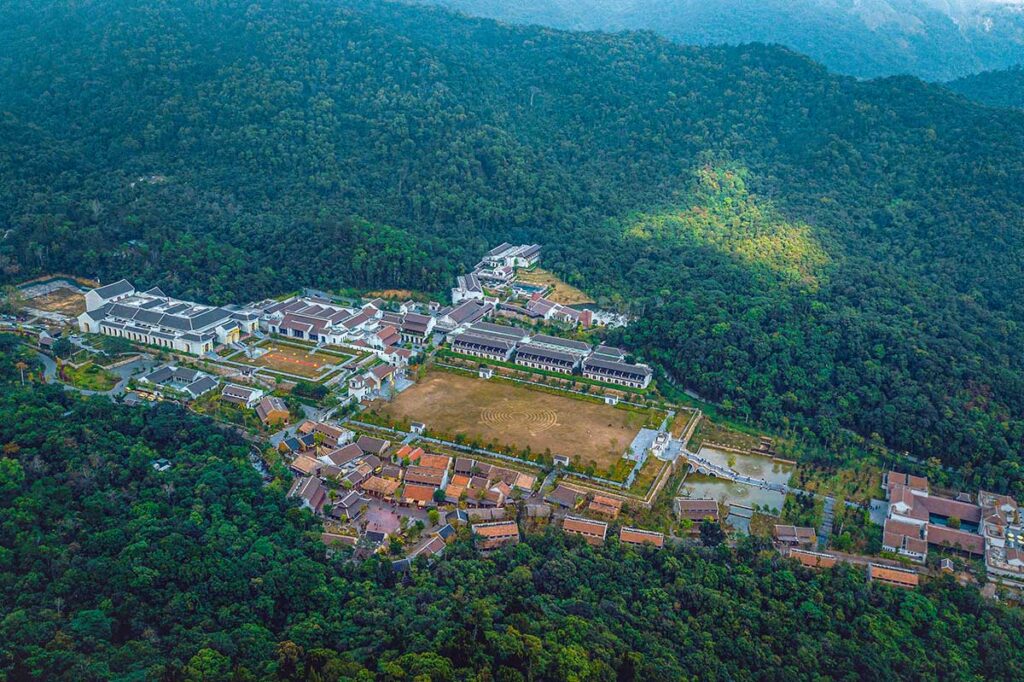
Located on the sacred Yên Tử Mountain in Quang Ninh Province, this monastery is considered the cradle of Vietnamese Zen Buddhism. It was here that King Trần Nhân Tông abdicated his throne in the 13th century and founded the Trúc Lâm Zen school. Surrounded by misty mountains and ancient forests, Trúc Lâm Yên Tử is both a pilgrimage site and a cultural symbol of Vietnam’s spiritual history.
The monastery is about 120 km from Hanoi and often visited as part of a day trip or combined with Ha Long Bay. Reaching it involves a cable car ride and a walk through scenic forest paths, making the journey part of the experience. The site is busiest during the Yên Tử Spring Festival (January–March lunar calendar), when pilgrims from across Vietnam gather here.
2. Trúc Lâm Da Lat (Da Lat)
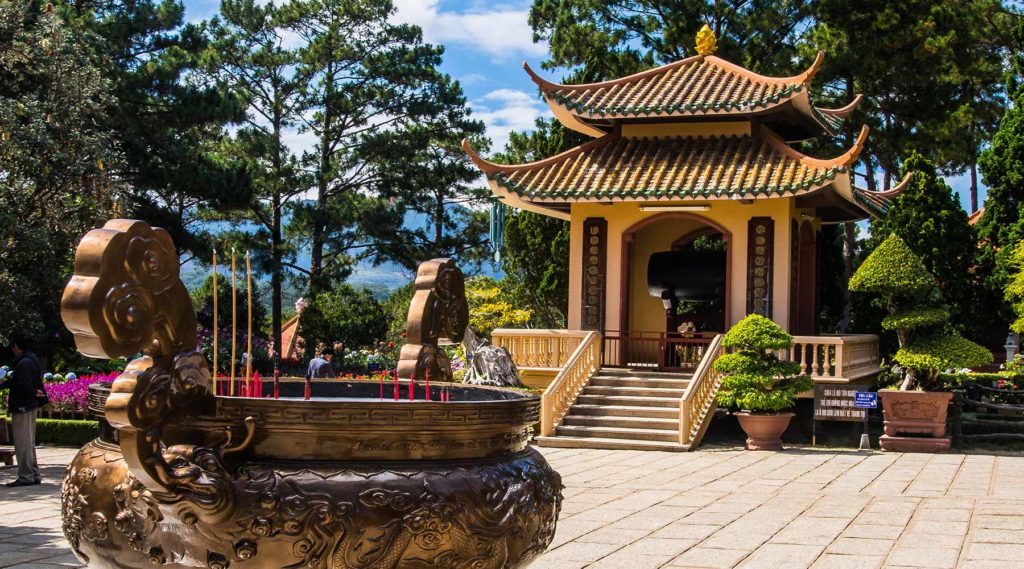
Built in the 1990s, Trúc Lâm Da Lat sits on a pine-covered hill overlooking Tuyen Lam Lake. It is one of the largest Trúc Lâm Zen monasteries and a striking example of contemporary Vietnamese Buddhist architecture. The grounds are carefully landscaped with flower gardens, offering a serene contrast to Da Lat’s lively town center.
Easily reached by taxi or a short cable car ride from Da Lat city, this monastery is one of the most accessible for travelers. Many visitors combine it with a boat trip or walk along Tuyen Lam Lake, or simply enjoy the gardens as part of a half-day Da Lat itinerary. It can get busy in peak season, but early mornings are quiet and atmospheric.
3. Tu Hieu Monastery (Hue)
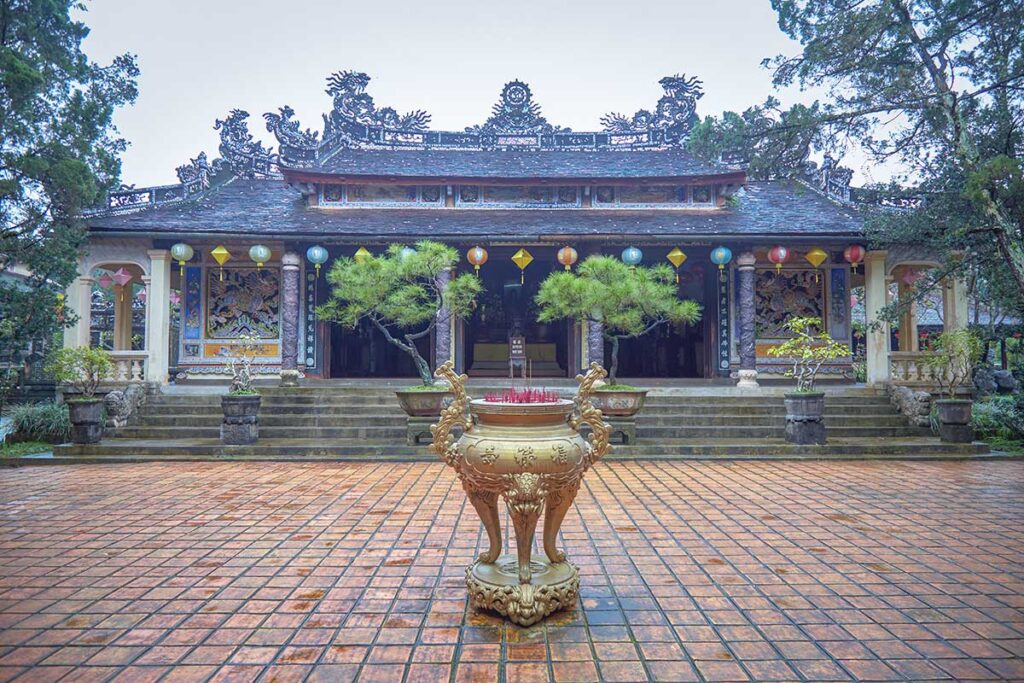
Tu Hieu Monastery, located in the pine forests just outside Hue, is one of Vietnam’s oldest and most respected monasteries. It is closely linked to Thích Nhất Hạnh, the globally renowned Zen master, who was ordained here. The monastery is known for its tranquil atmosphere, ancient stupas, and poetic setting among trees and lotus ponds.
Tu Hieu is only a short drive or cycle from central Hue, often combined with a visit to nearby royal tombs such as Tu Duc. It’s less touristy than the city’s pagodas, making it a rewarding stop for travelers who want to experience a functioning monastic community. Visiting is free, but mornings and late afternoons are the best times for a peaceful atmosphere.
4. Trúc Lâm Bach Ma (Hue)
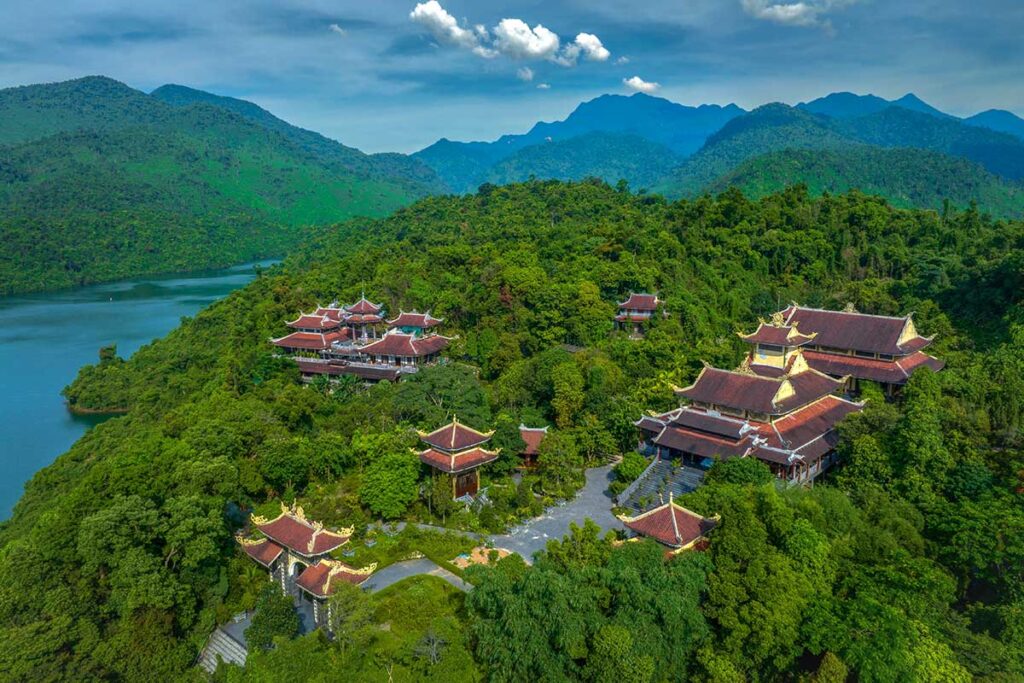
This monastery sits by Truoi Lake at the foot of Bach Ma National Park, surrounded by mountains and water. Built in the early 2000s, Trúc Lâm Bach Ma was designed to be both a spiritual retreat and a scenic attraction. A large statue of Buddha on a lotus rises from the lake, making it one of the most photogenic monasteries in central Vietnam.
Reaching the monastery involves a boat trip across Truoi Lake, which adds to the sense of retreat. It can be combined with a visit to Bach Ma National Park for travelers interested in both nature and culture. Facilities are limited, so it’s best to plan this as part of a day trip from Hue rather than an overnight stay.
5. Tam Chuc Pagoda Complex ( Ha Nam)
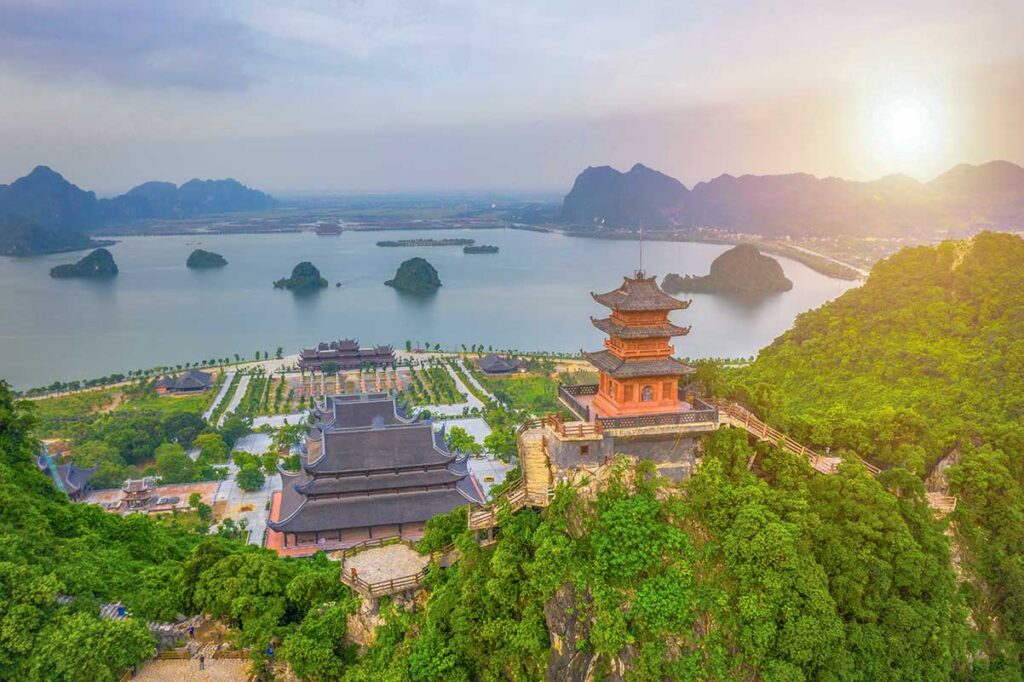
Tam Chuc is currently the largest Buddhist complex in Vietnam, covering thousands of hectares of lakes, hills, and temples. Though relatively new, it has quickly become a major pilgrimage site and a showcase of modern Buddhist architecture, with vast halls, giant statues, and panoramic views across the lake.
Located about 70 km south of Hanoi, Tam Chuc is easy to visit as a day trip or combined with the Perfume Pagoda. The scale is impressive but the atmosphere can feel more like a grand cultural park than a quiet monastery. Weekdays offer the best chance to explore without large crowds, while weekends and festivals attract tens of thousands of visitors.
6. Bai Dinh Pagoda Complex (Ninh Binh)
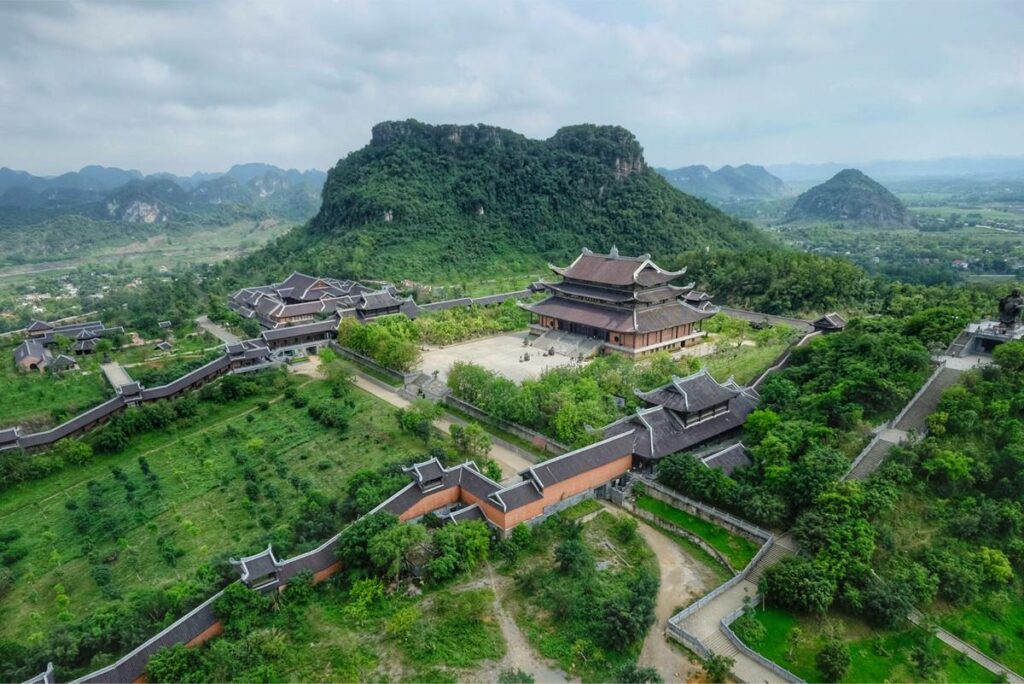
Bai Dinh is one of the largest Buddhist temple complex in Southeast Asia, blending an ancient cave pagoda with an enormous modern area built on a hillside. The scale is extraordinary, with massive halls, a giant bronze Buddha, and long corridors lined with thousands of statues. It’s an important pilgrimage destination and a key part of Ninh Binh’s spiritual heritage.
Just outside Ninh Binh city, Bai Dinh is easy to combine with a boat trip in Trang An or a visit to Hoa Lu Ancient Capital. The complex is vast, so expect a lot of walking or take the electric shuttles provided inside. It’s best visited in the morning before the tour buses arrive, as it can get crowded, especially on weekends and during festivals.
7. Perfume Pagoda (Hanoi)
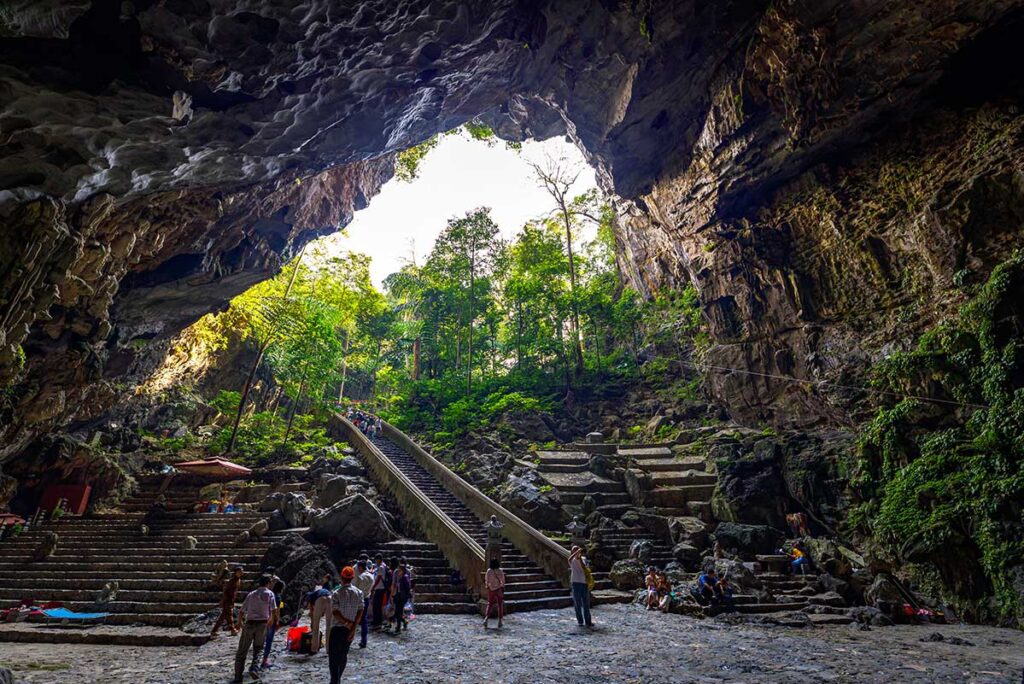
Perfume Pagoda is a sprawling network of shrines, pagodas, and temples set in limestone mountains and caves. The centerpiece is Huong Tich Cave, often called “the most beautiful cave under the sky” in Vietnamese tradition. For centuries, it has been one of the country’s most famous pilgrimage sites, drawing pilgrims from across northern Vietnam.
About 60 km southwest of Hanoi, the trip begins with a boat ride along the Yen River followed by a hike or cable car ride up to the pagoda area. The annual Perfume Pagoda Festival (January–March lunar calendar) is the largest in Vietnam, attracting tens of thousands, but it can feel overcrowded. Outside festival time, the area is quieter and more suitable for travelers who want to combine cultural and natural experiences.
8. Trúc Lâm Tay Thien (Vinh Phuc)
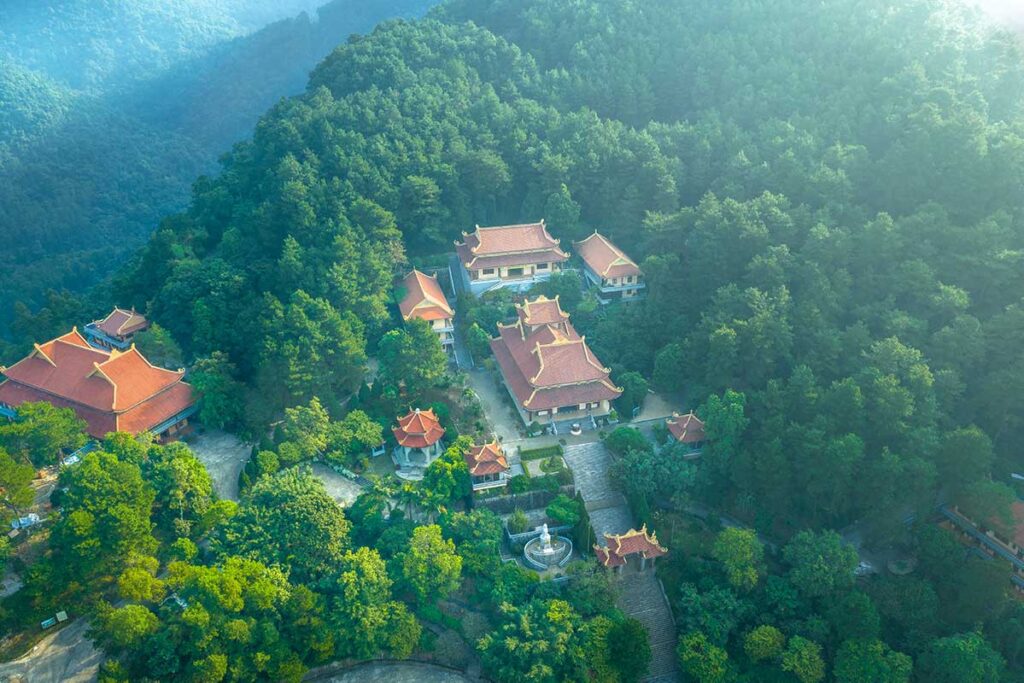
Located in the Tam Dao mountains, Trúc Lâm Tay Thien is considered one of the most important Trúc Lâm Zen monasteries in northern Vietnam. It was built in the early 2000s but lies on a site with a long history of Buddhist practice, connected to the legend of a monk spreading Buddhism here centuries ago. Its large halls, statues, and mountain setting make it both spiritually and scenically impressive.
Easily reached from Hanoi in about two hours, Tay Thien is often combined with Tam Dao National Park. A cable car brings visitors closer to the main buildings, but the walk through the forest paths is also popular. It’s especially busy during spring festivals, but at other times it offers a quieter retreat into the mountains.
9. Huyen Khong Son Thuong (Hue)
Huyen Khong Son Thuong is a secluded Zen monastery tucked away in the hills outside Hue. It’s smaller and less formal than the Trúc Lâm complexes, known instead for its tranquil gardens, ponds, and natural setting. The atmosphere is contemplative and relaxed, with monks dedicated to meditation and simplicity.
Located about 10 km from Hue city, it’s best reached by taxi or motorbike, often combined with visits to nearby royal tombs. It’s a place for quiet reflection rather than sightseeing, so visitors should come with respect and without expectations of grand architecture. Early morning or late afternoon provides the most peaceful experience.
10. Trúc Lâm Phuong Nam (Phong Dien, Can Tho)
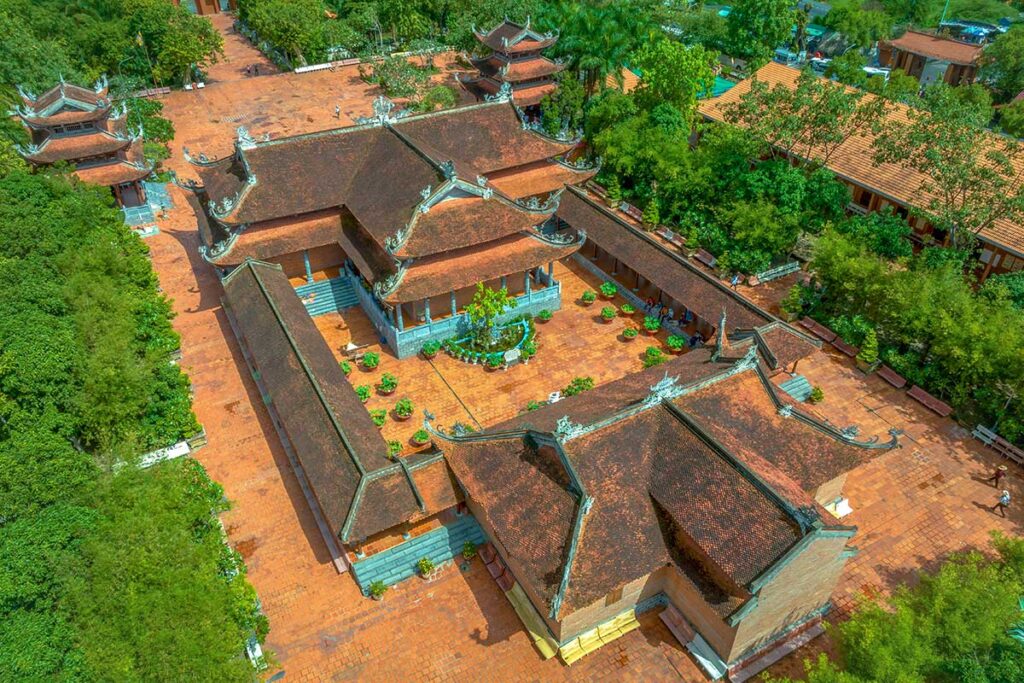
Phuong Nam is the most important Trúc Lâm Zen monastery in the Mekong Delta, built in 2014 in a style reminiscent of the Ly–Tran dynasties. With its wooden halls, red-tiled roofs, and surrounding gardens, it stands out in a region more associated with floating markets and riverside life than mountain temples. It offers a calm spiritual stop in the heart of the delta.
Located about 15 km from Can Tho city, it’s easy to add to a Mekong Delta itinerary alongside attractions like Cai Rang Floating Market or fruit orchards in Phong Dien. The monastery is less crowded than northern sites, so it’s a good option for travelers who want a cultural highlight in the south without large tourist groups.
Tips for visiting a Monastery in Vietnam
Dress code
Wear modest clothing that covers shoulders and knees. Monasteries are active religious sites, so the same rules apply as when visiting temples and pagodas.
Active religious sites
Remember that monasteries are first and foremost places where monks live and practice. Visitors are welcome, but you’re stepping into a working spiritual community, not just a tourist attraction.
Photography
Most monasteries allow photos in gardens and courtyards, but restrictions may apply inside prayer halls or during ceremonies. Look for signs or follow the lead of local visitors before taking out a camera.
Best times to visit
Early mornings and weekdays are ideal, when the atmosphere is quieter and more reflective. Large festivals can be interesting but also very crowded, which may not suit travelers looking for peace.
Respectful behavior
Keep your voice low, remove shoes before entering main halls, and avoid interrupting prayers or meditation. A calm, respectful approach will make the visit more meaningful for both you and the community.
Monastery stays in Vietnam
Staying at a monastery in Vietnam is possible, though not as common as simply visiting. A monastery stay usually means joining a meditation retreat, where guests live alongside monks, follow a daily schedule of sitting meditation, chanting, and mindful work, and sleep in simple shared accommodation. It’s less about sightseeing and more about experiencing Buddhist practice in daily life.
Some monasteries welcome short-term visitors, while others are more selective. Tu Hieu Monastery in Hue occasionally hosts foreign practitioners, especially those following the teachings of Thích Nhất Hạnh. A few Trúc Lâm Zen monasteries also organize meditation retreats, and the Plum Village tradition (founded by Thích Nhất Hạnh) has centers in Vietnam that accept international participants.
Travelers should expect basic conditions—mats or simple dorm beds, vegetarian meals, early mornings, long periods of silence, and strict schedules. It’s rewarding for those who want a deeper experience, but not a casual stay.
Arranging a monastery stay usually requires direct contact with the monastery, sometimes only in Vietnamese. In practice, many travelers join through local contacts, organized retreats, or guided cultural programs rather than booking individually.
